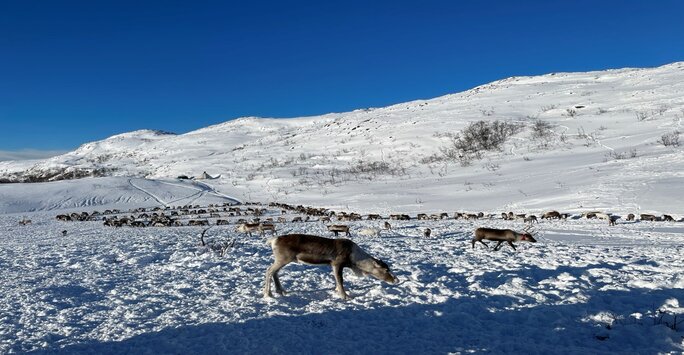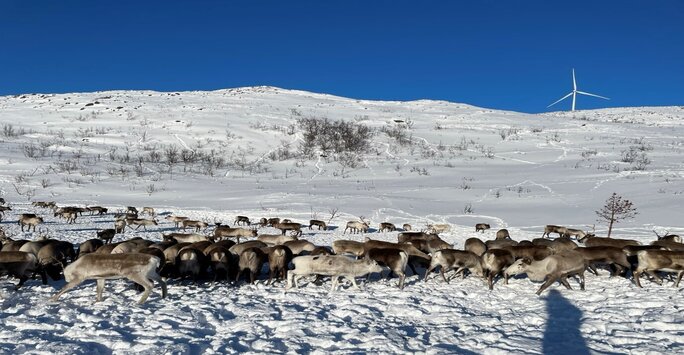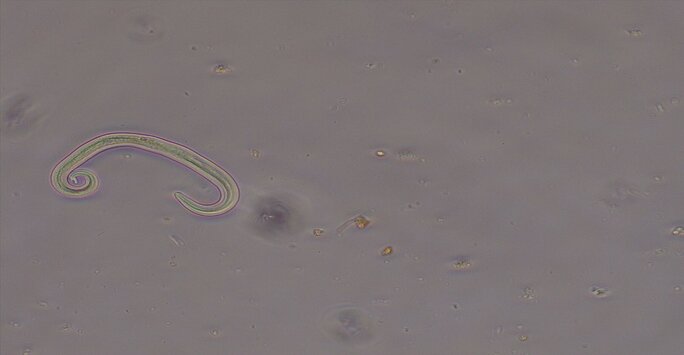From the Lab to the Tundra
Posted on: 6 April 2023 by Katy Roy in April 2023 posts

At the beginning of March, PhD student Katy Roy had the opportunity to travel to Sommarøy, Norway to attend the 4th TARANDUS Workshop to present her research into the threats that face the reindeer population.
I was very pleased to have the opportunity to attend the 4th TARANDUS workshop in Sommarøy, Norway from 6th-8th March. The workshop was titled “Feeding related diseases and other threats to reindeer populations”. I gave an oral presentation to introduce my PhD project and my upcoming fieldwork plans for this year. It was an informative and enlightening workshop, with fascinating presentations and a great environment to give the first presentation of my PhD. I found it really useful to hear about the ongoing research in to threats to reindeer health and welfare.
Indigenous Sami culture, identity and food security depends on reindeer herding. Sami reindeer herders in Norway practice transhumance – semi-domesticated reindeer move with their herders between seasonal grazing areas. Throughout their migration, reindeer can be exposed to a wide range of pathogens. I am studying nematode parasite Elaphostrongylus rangiferi, which is a brainworm causing elaphostrongylosis, a neurological disease, in reindeer. E. rangiferi has an indirect lifecycle, meaning before the parasite can infect reindeer (definitive host) it must develop in a gastropod (intermediate host).

Sami herders have already reported elaphostrongylosis outbreaks after warm summers, and climate change has the potential to have a great impact on reindeer and their herders in the near future. The development of E. rangiferi in its intermediate host is linked to climatic factors, such as temperature and precipitation. In the Arctic, temperatures are rising twice as fast as the global average, and at a faster rate than anywhere else in the world. The parasite develops at a faster rate with increasing temperature, and so there is an increased risk to reindeer of developing elaphostrongylosis. Treatment options for Elaphostrongylus rangiferi are limited – once the parasite has reached the brain and clinical signs are seen in the reindeer, it is too late to treat. Therefore, it is important that effective management strategies are developed to avoid infection and mitigate the effects of climate change.
This need has led to my PhD project. I will develop predictive models of Elaphostrongylus rangiferi with the aim of creating a decision support tool (such as Nematodirus Forecast) which will alert herders to areas that are likely to have high levels of infective E. rangiferi larvae. However, there is a lack of data on the gastropod species involved in the life cycle of this parasite and their environmental tolerances which is preventing model development.

The first stages of my PhD, which I began in October 2022, involve me collecting data to address some of these knowledge gaps. While in Norway, I also visited one of my PhD supervisors, Rebecca Davidson, who is based at the Norwegian Veterinary Institute in Tromsø. I had the opportunity to work at the institute and meet the researchers there. It was great to be part of their research group and discuss my PhD field and lab plans for the summer. It was also great to experience other aspects of life in Tromsø – I tried skiing for the first time and really enjoyed snowshoeing with a view of the Lyngen alps.
My trip also included a visit with other researchers from the Norwegian Veterinary Institute to a reindeer herd near Tromsø. We had the opportunity to speak with the herder about the challenges the community is facing, related to feeding, infrastructure and climatic changes. Seeing the reindeer and the environment they are in gave me important insights and context into the study system.
Keywords: veterinary science, PhD research.